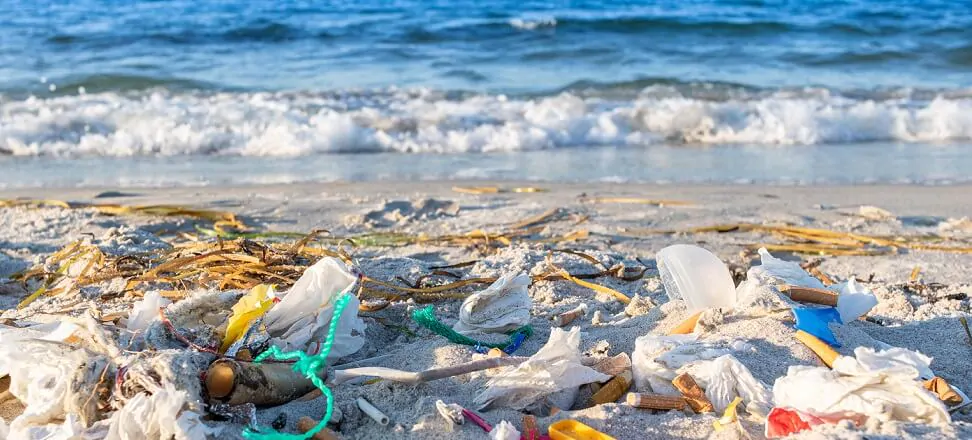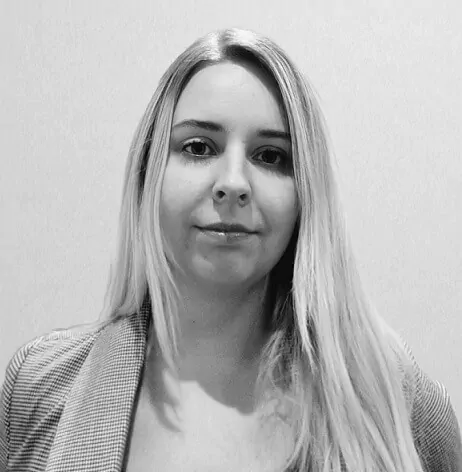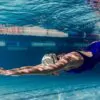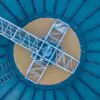Feedback
What are we stressing to Baltic residents?
What is stress? Drawing from one scientific definition, “stress is the process by which environmental factors threaten or upset the body’s equilibrium and by which the body responds to the threat.”[1] Stress accompanies modern humans constantly, but can we talk about stress in animals? Of course it does. Studies have shown that strong tension arises in animals when, in short, the body loses its sense of control over a situation as a result of external stimuli – stressors.
It should be noted that stressors can be factors found in nature, but a number of stimuli, acting adversely on animals, are introduced into the environment by humans. We will not write here about the response of the immune system of aquatic organisms, but we will deal with stressors that can be called human pressures on the environment, specifically on the marine environment of the Baltic Sea. So what pressures are we putting on marine animals?
Marine pressures on the sea
The Baltic Sea is exposed to many types of marine pressures. In this article, we will focus on three of them – noise, light pollution and waste. Of course, all of these factors have an adverse effect on the environment, depending on the intensity and scale. So they require urgent action for sustainable use of resources and protection of marine ecosystems in the region.
What and how do we make noise?
Underwater noise in the Baltic Sea is mainly caused by human activities such as ship traffic, operation of oil rigs, sonar and other equipment. This negatively affects marine fauna, including mammals: seals, walruses and whales. Long-term noise exposure can disrupt communication, migration, foraging, reproduction and predator avoidance.
Also, fish react badly to sounds that are too loud. For example, elevated levels of the stress hormone in the blood have been reported in some species[2]. In extreme cases, noise can lead to hearing damage and even death in animals[3].
Noise is divided into two types: continuous and impulsive. The first in the Baltic is generated by constant or regular sources, such as ships, mining and drilling industries. It is a sound of constant intensity that lasts for a long time. Impulse noise, the second type, is generated by sudden, short-lived events such as underwater booms and explosions, seismic exploration of the seafloor or piling. It is characterized by a sharp rise and fall in intensity over a short period of time. Both types of sound have a negative impact on the marine environment, but impulse noise is considered particularly harmful due to its intensity and sudden variability, which can disrupt natural biological processes and lead to hearing damage in marine animals[4].
Therefore, it is important to monitor noise levels and take measures to reduce their impact on the environment, including marine and coastal fauna. What it looks like on the map, take a look below.
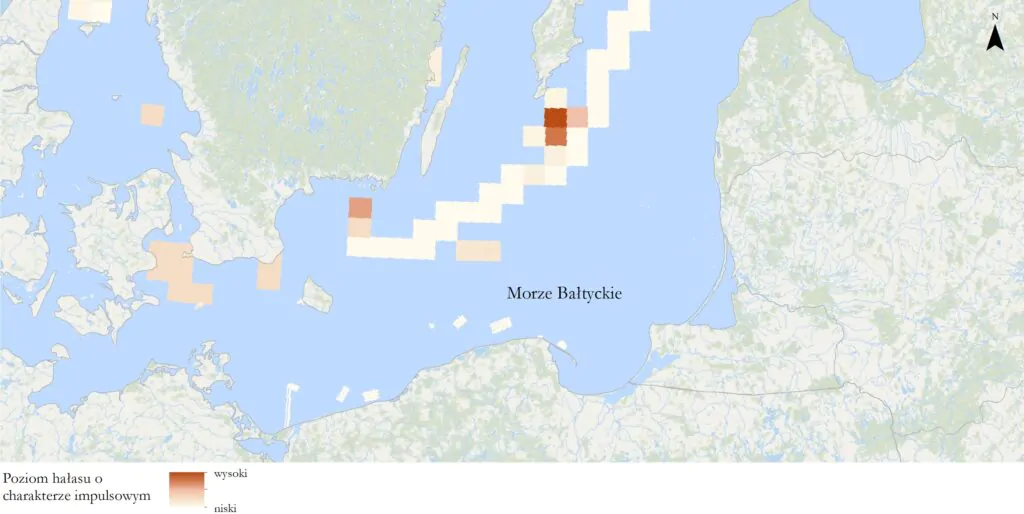
Chart: Monika Mazur, Pectore-Eco, based on HELCOM data
Why does light pollute?
Light pollution of the Baltic Sea refers to excessive nighttime lighting that disrupts the natural diurnal cycle of marine organisms and affects the quality of human life. Negative effects of night light on biota, including fish migration and reproduction, have been noted. Artificial lighting disrupts the natural diurnal rhythm, which affects biological processes such as migration, reproduction, feeding and predator avoidance, leading living organisms to disorientation, behavioral changes, inhibition of some life processes and even death. According to many studies, exposure to artificial light at night has a significant impact especially on those organisms for which light determines the time of biological activity[5].In addition, it can affect the navigation of fish that use it for orientation in the water.
Through artificial night lighting of aquatic ecosystems, algae increase production, so excess artificial light can also affect water chemistry and lead to changes in the marine environment[6]. As a result, this can reduce biodiversity and destabilize the ecosystem, and consequently affect the availability of food for people. In addition, excess artificial light can increase energy consumption, costs and carbon emissions.
Accordingly, measures are being taken to reduce light pollution – reducing street lighting and advertising, as well as educating the public.
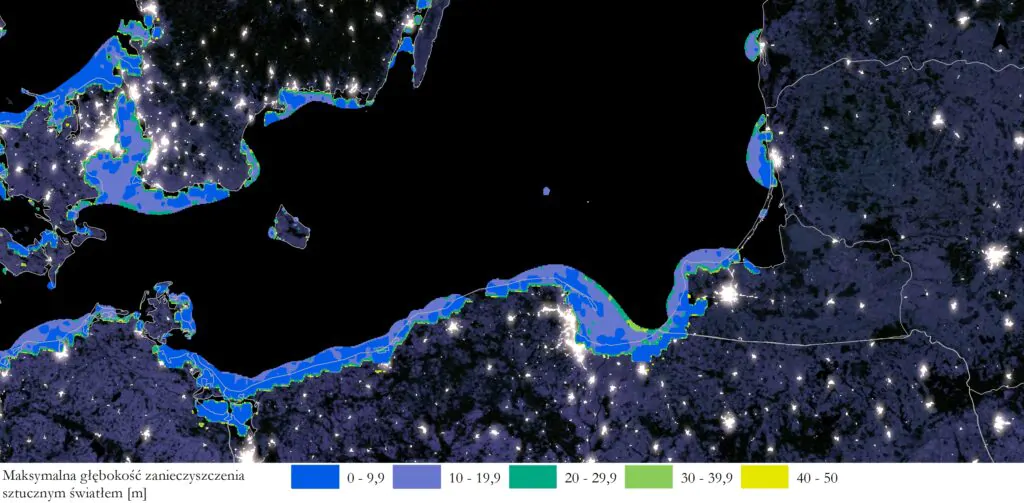
Excerpted by Monika Mazur, Pectore-Eco, based on Atlas of artificial light pollution under the surface of the seas and oceans
Waste – into the garbage can not into the sea
Littering in the Baltic Sea is a serious problem and one of the main factors threatening the marine environment in the region. The presence of waste is closely related to human activity, and this is a clearly visible problem along the Baltic Sea coast. Waste, such as plastic bottles, bags, packaging and fishing trash, is dumped into the sea and lingers on its bottom, polluting marine habitats and causing damage to the ecosystem. In addition, harmful chemicals can seep from the waste into the food chain, affecting the health of marine organisms and humans who eat contaminated fish and seafood.
Plastic waste; fishing-related waste, such as fishing nets; industrial waste; pollution from transportation; municipal sewage; World War II waste; and other types of waste, such as glass, ceramics and metals, are deposited in the sea. All of them have a negative impact on the environment, affecting the health of marine organisms by killing and maiming animals that become entangled in abandoned nets or plastic packaging, or ingest plastic fragments.
The presence of microplastics has been found in the bodies of many species of fish, shellfish, mussels and other marine animals[7]. Research on the issue is still in progress, but it is certain that its particles are absorbed by phyto- and zooplankton, invertebrates living in the wadi and coastal zone, many arthropods, fish, and directly or indirectly, as end links in the trophic chain, also by birds. It is also known that invertebrate studies have recorded cases of microplastics damaging cells and tissues, and data have been accumulated indicating that the interactions are not only mechanical in nature. Toxic organic and inorganic compounds can be deposited and concentrated on microplastic particles, and the longer a piece of plastic resides in a polluted aquatic environment, the more it will accumulate harmful substances[8].
Long-term action is needed to reduce litter in the Baltic Sea. Recycling and waste management programs should be put in place, the public should be educated about the environment, and regulations such as a ban on single-use plastic products should be introduced. Ensuring effective protection of the Baltic Sea and its ecosystems requires cooperation at the national and international levels.
In the article, I used, among others. From the works:
[1] Gatchel R.J., Baum A., Krantz D.S. An introduction to health psychology. Random House, New York 1989
[2] Wysocki L.E., Dittami J.P., Ladich F. Ship noise and cortisol secretion in European freshwater fishes. Biol. Conserv. 128(4): 501-508, 2006
[3] Weilgart L.S. The impact of ocean noise pollution on marine biodiversity. Dissertation, Dalhousie University 2008
[4] HELCOM, 2018: HELCOM, State of the Baltic Sea – Second HELCOM holistic assessment 2011 – 2016
[5] Sanders D., Frago E., Kehoe R., Patterson Ch., Gaston K. A meta-analysis of biological impacts of artificial light at night. Nature Ecology & Evolution, Nature, 2021, 5 (1), pp.74-81. ⟨10.1038/s41559-020-01322-x⟩. ⟨hal-03464252⟩.
[6] Talanda J., Ecological light pollution, or when artificial light at night disrupts the natural cycle of light and dark in an ecosystem, Department of Hydrobiology, Institute of Zoology, Faculty of Biology, University of Warsaw, 2015
[7] Update of the preliminary assessment of the state of the marine environment. GIOŚ
[8] Fleituch, T. Microplastics – the Trojan horse of aquatic ecosystems. Chrońmy Przyrodę Ojczysta, 72(1), 3-13, 2016

 Polski
Polski
